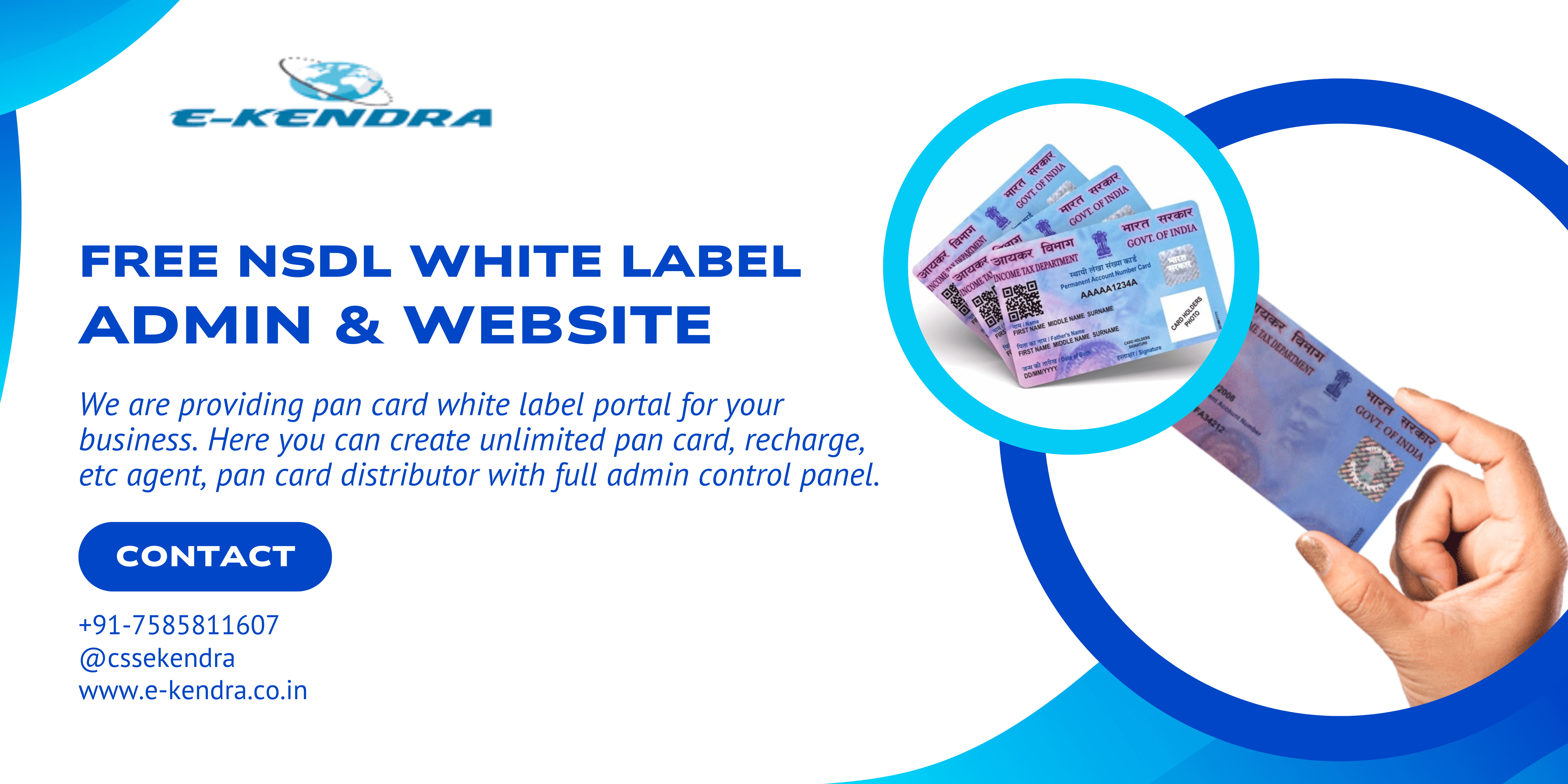We are providing pan card white label portal for your business. Here you can create unlimited pan card, recharge, etc agent, pan card distributor with full admin control panel. You can upload your company logo. If you want to business with pan card white label then CSS EKENDRA PRIVATE LIMITED is best for your company. CSS EKENDRA PRIVATE LIMITED does not provide only Pan Card API / White Label Pan Card Portal, CSS EKENDRA PRIVATE LIMITED provides complete solutions for your business. During the journey we have 20000+ pan card center in our country.
Go-Live With Your Own Brand in 10 Minutes!
We offer modern solutions for growing your business
A powerful admin Panel that especially build for Recharge, Mobile and DTH TV, PSA, UTI, PAN Card. Build and Operate your Business Solutions.
Our White Label Portal Features
- Unlimited Retailers.
- Unlimited Distributors
- Unlimited Master Distributors
- Mobile & DTH Recharge.
- NSDL Paperless PAN
- UTIITSL E-Wallet PAN
- Your Own Logo
- Commission Set Facilities
- Full Admin Control Panel
- No Stationary Required, as all reports are online
- Working capital depends on your daily transactions
- No minimum deposits and balance maintenance required
Why Purchase White Label Portal From Ekendra
- 24/7 Billing Available
- Instant Commission
- Expert Team
- Quick Support
- Instant Problem Solutions
- 1000+ Satisfied Clients.
- 8 Years + Experience
-
Recharge & PAN Card Software
-
How to enable popup?
-
Pan Card Form 2024
What is that PAN card?
Permanent Account Number (PAN) is a 10-digit alphanumeric identification number (including both alphabets and numbers) issued to Indians, primarily to those who pay taxes. All tax-related information of a person is recorded against a single PAN number, which serves as the primary key for information storage.
Can students get a PAN card?
No, the government of India has not implemented any special PAN cards for students. Students must apply for a PAN as minors if they are below the age of 18 years while those older than 18 years can apply as usual. Does a PAN Card require Aadhaar? An Aadhar card is not required in order to apply for a PAN card.
What is the meaning of Protean in PAN card?
To enable entities to verify Permanent Account Numbers (PANs), Income Tax Department (ITD) has authorized Protean eGov Technologies Limited (Protean) to provide an online PAN verification service for verification of PANs to eligible entities.
Why is NSDL now Protean?
What is the difference between NSDL e-Gov. and Protean?
NSDL e-Governance Infrastructure got rebranded as Protean eGov Technologies. The new identity aligns with the company's transformation in its offerings to the businesses and citizens of India.
How to do EKYC for PAN card?
- Step 1: Login to ekendrapan.in.
- Step 2: Search PAN Card services.
- Step 3: Click on Pan Card E-KYC Services.
How can I get eSign on my PAN card?
Authenticate my Aadhaar through OTP or Biometric for authenticating my identity through the Aadhaar Authentication system for obtaining my e-KYC through Aadhaar based e-KYC services of UIDAI and use my Photo and Demographic details (Name, Gender, Date of Birth and Address) for e-Signing the PAN application.
Social media: Follow the CSS Ekendra Private Limited channel



